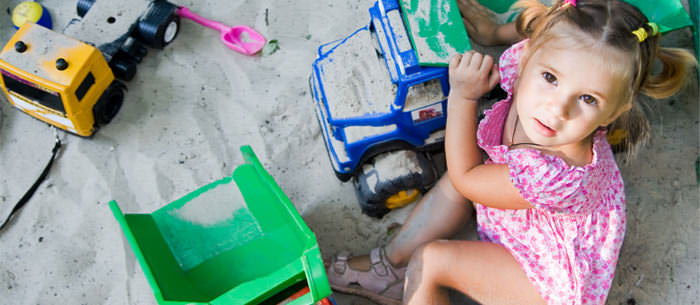When a Bible Belt mom supported her 5-year-old son dressing as “Scooby-Doo” character Daphne for a preschool costume party and blogged about it, her post generated a million hits and sparked national debate.
Angelina Jolie’s admiring comments that 4-year-old daughter Shiloh insists on dressing like a boy drew howls of outrage – and praise.
And most recently, J. Crew launched a Crewcuts ad campaign of a mom and her toddler having a hilariously good time – painting his toenails pink. Outrage ensued.
It’s no wonder the subject of cross-dressing kids has struck a chord. Parents of all stripes confront preconceptions and anxieties when little ones engage in gender-bending play.
Experts agree it’s perfectly normal for Johnnie to prance around in his big sister’s tutu or for Susie to suddenly forsake baby dolls for power tools. Yet even enlightened moms and dads — some say especially dads — can freak out when child development doesn’t proceed along pink-blue lines.
Princesses vs. Thomas the Tank
Melanie*, 41, a social worker who lives in a progressive neighborhood in Brooklyn, was surprised by her own reaction when her 3-year-old daughter wanted to be Thomas the Tank Engine for Halloween. “My husband said no, and I did not disagree,” she said.
Their daughter had been obsessed with the character — a staple of every boy’s toy bin — since she was 18 months old.
“We encouraged the Thomas thing because it’s appropriate, cute. But as soon as it came to putting on a costume, we were like, ‘Hmmm, maybe not. Maybe I am not as evolved as I thought I was. I know how stifling gender roles can be, but there I went: ‘No, sweetie, be a princess instead of Thomas.'”
Some parents have bought into the idea that children are hard-wired for certain kinds of play based on gender and deviation means something has short-circuited. Lise Eliot, an assistant professor of neuroscience at Rosalind Franklin University in Chicago, says that’s just not the case. Her 2010 book, “Pink Brain, Blue Brain,” argues that babies are born with just a “small bias” for certain activities. Among the evidence: in infancy, both boys and girls prefer to play with dolls.
Are Kids Born with a Pink Brain or a Blue Brain?
“We live in a Mars-Venus era, where everyone expects these differences to be categorical. And they’re not,” she says.
And putting young kids into boy-or-girl boxes deprives them of a developmental opportunity: exercising different parts of their brain when it’s most elastic.
Playing with dolls helps children improve verbal skills, nurturing skills and social sensitivity, while an erector set hones visual and spatial skills — all useful, no matter whether the bedroom theme is Dora the Explorer or Bob the Builder.
“All children need more cross-training,” Eliot says.
Changing Expectations
Nadine*, 34, a lawyer and mother of two in the Houston suburbs, wishes more people agreed. But when her son declared he wanted to do ballet instead of T-ball, most dance studios told her they didn’t take boys. She finally found a class, but wider acceptance has been more challenging. Her in-laws needle the 5-year-old boy, and her husband has struggled with a fantasy of raising an archetypal boy.
“When my husband imagined what it would be like to have a boy, he was hoping they would race their remote control cars together,” Nadine says.
Nadine has tried to make her home a “safe place” where her son can play how he wants. But she can’t completely protect him from outsiders.
She says he recently told her: “I think I was born wrong. I just really like wearing bows in my hair and I really wish that I could.”
That wish is what led Cheryl Kilodavis to write “My Princess Boy,” a picture book inspired by her son Dyson, who is almost 6.
When Dyson first started wearing sparkly dressup at age 2, Kilodavis tried to redirect him to boyish getups. It didn’t work, and she turned her energies to educating the public about kids like him. Her self-published book led to a segment on Seattle television, then a contract with Simon & Schuster. Kilodavis says the response has been overwhelmingly positive — especially from heterosexual men — although some online detractors suggest she’s pushing her son toward gender confusion.
She responds that Dyson, who did see a child psychologist, doesn’t seem the least bit confused. “He’ll just say, ‘If you don’t like me in a dress, you’re not my friend,'” she says.
Some adult anxiety seems rooted in an inability to view play as just that. Grownups assume a choice of toy or clothing says something about gender identity or sexual preference.
“That’s bad science,” says Ken Corbett, a Manhattan psychoanalyst, NYU professor, and author of “Boyhoods: Rethinking Masculinities.”
Jennifer, 40, a northern California mom of three, said she didn’t think her son’s love of his older sisters’ finery and toys meant anything beyond a fun-loving spirit.
“The girls’ stuff allows you to be so creative. It’s feel-good happy play,” she says. “The boys’ stuff is all about competition and scariness and saving the world.”
Plus, she figured he would grow out of it. And now that’s he is five and a half, he has.
Sort of.
“I have seen him gravitate more towards sports and superheroes,” she says, then pauses.
“But if a princess movie is on, he’ll be right there watching it.”
*Some names have been changed to protect privacy.




